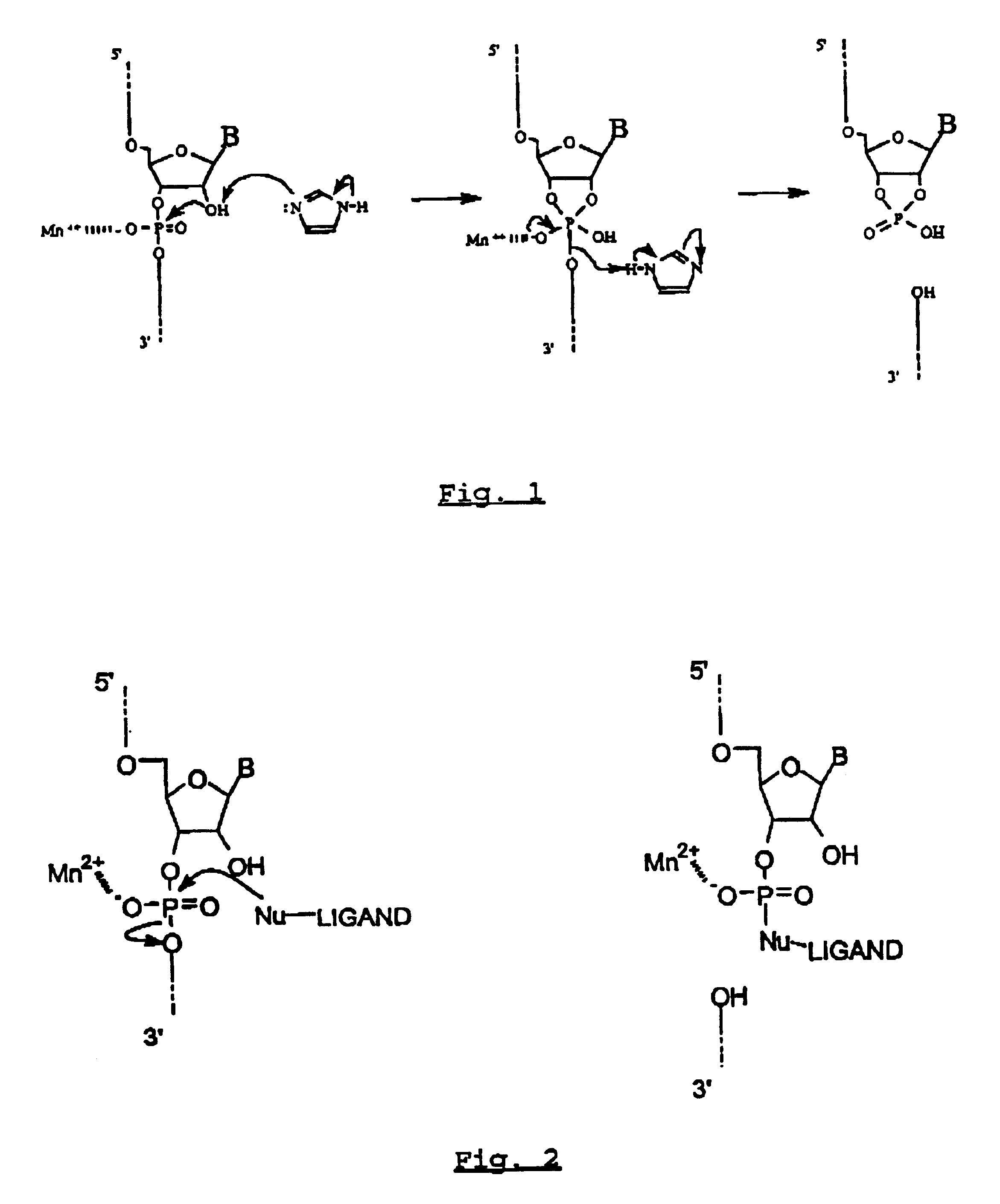Process for labeling a ribonucleic acid, and labeled RNA fragments which are obtained thereby
a technology of ribonucleic acid and labeling technology, which is applied in the field of process for labeling a synthetic or natural ribonucleic acid (rna), can solve the problems of difficult interpretation of results when detecting nucleic acids, complex technique of attaching labels to phosphates, and inability to enable uniform labeling of nucleic acids, etc., to achieve the effect of facilitating hybridization of rna fragments
- Summary
- Abstract
- Description
- Claims
- Application Information
AI Technical Summary
Problems solved by technology
Method used
Image
Examples
example 2
Antibody Staining of Synthesized Oligodeoxyribonugleotides as a Medal for Labeling
2.1. Preparation of oligonucleotide 3'-monothiophosphate.
Oligoribonucleotide (ODN-ps) (5'-CUG AAC GGU AGC AUC UUG AC-3') bearing a monophosphate group at the 3'-end was prepared by Eurogentec (Seraing Belgium) using the phosphoramidite chemistry.
2.2. Labeling during cleavage of oligonucleotide.
Oligoribonucleotide 3'-monothiophosphate was prepared as described in 2.1.
To this oligonucleotide (5 .mu.l, 1 nmol) 3 .mu.l Imidazole (0.1M in pure water), 3 .mu.l of MnCl.sub.2 (1M in pure water) and 2 .mu.l of one of four labels (100 mM) and pure water were added for a final volume of 50 .mu.l. Reaction medium was homogenized and incubated at 65.degree. C. for 30 min.
Different labels were tested:
Label a: N-(biotinoyl)-N'-(iodoacetyl)ethylenediamine (100 mM in DMSO) (Molecular Probe reference B-1591)
Label b: (+)-Biotinyl-iodoacetamidyl-3,6-dioxaoctane diamine (100 mM in pure water) (pierce, Rockford, Ill., refer...
example 3
Signal Amplification During LDC (Labeling During Cleavage) with Natural RNA
3.1. RNA Isolation
Total RNA was isolated from Escherichia coli strain MG1655 grown in LB broth (Teknova). The cells were grown to mid-log phase at 37.degree. C. and harvested by centrifugation. RNA was isolated using the RNeasy kit (Qiagen). The isolated RNA was quantitated by absorbance measurements taken at 260 nm. 3.2. RNA Fragmentation and labeling:
RNA was labeled with fluorescein by combining the following in a final volume of 100 .mu.l: 8 .mu.g of RNA, 30 mM CHES (Aldrich, reference 22403-0), pH 9-9.5, 1 mM 5-(bromomethyl)fluorescein (Molecular Probes, added from a 50 mM stock in dimethylformamide), 30 mM manganese chloride. The components were placed in a PCR tube, heated to 65.degree. C. for 40 min and cooled to 4.degree. C. in a GeneAmp PCR System 2400 Instrument (Perkin Elmer). To label the RNA with biotin the following were combined in a final volume of 100 .mu.l: 10 .mu.g of RNA, 30 mM MOPS (Aldri...
PUM
 Login to View More
Login to View More Abstract
Description
Claims
Application Information
 Login to View More
Login to View More - R&D
- Intellectual Property
- Life Sciences
- Materials
- Tech Scout
- Unparalleled Data Quality
- Higher Quality Content
- 60% Fewer Hallucinations
Browse by: Latest US Patents, China's latest patents, Technical Efficacy Thesaurus, Application Domain, Technology Topic, Popular Technical Reports.
© 2025 PatSnap. All rights reserved.Legal|Privacy policy|Modern Slavery Act Transparency Statement|Sitemap|About US| Contact US: help@patsnap.com

